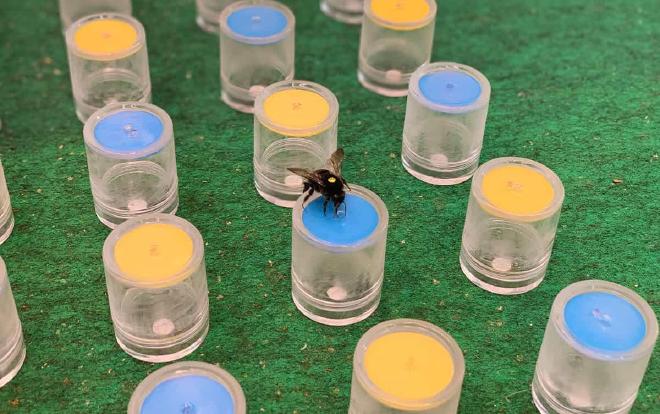

Pollinating insects such as bumble bees often repeatedly visit the same type of flower, even when a variety of flowers bloom nearby. This behavior is known as “flower constancy.” Darwin speculated that flower constancy was a passive response to avoid effort involved in remembering the different flower characteristics. However, this study reveals that this theory is incomplete, since it focuses too heavily on “memory constraints.” Instead, researchers found that flower constancy actually results from an optimal strategy that dynamically adjusts to balance the time required to recall different flower types with the time required to move between flowers.
In a study, researchers predicted how pollinator behavior changes in response to the levels of spatial mixture of plant species present. When different plant species are highly mixed, focusing on one type of flower increases the time spent moving between them, causing pollinators to skip over other species. In this situation, pollinators should maintain a low level of flower constancy to forage optimally, even if it requires additional effort to recall flower types. Moreover, when species have similar flower colors or shapes, pollinators should further lower their flower constancy, since switching between species then requires minimal effort. By contrast, when plant species are clustered in groups, focusing on a single flower type simultaneously reduces the costs of both memory retrieval and travel between flowers. Consequently, in such environments a higher degree of flower constancy is optimal.
To test these predictions, researchers used two types of artificial flowers and examined how bumble bees’ flower constancy changed with the levels of spatial mixture and color difference. As predicted, when the two flower types were more mixed and their flower colors were more similar, bees significantly decreased flower constancy. By contrast, when the same flower types were present in clusters, bees maintained a high level of constancy regardless of flower color difference. These findings challenge the widely accepted theory of pollinator flower constancy that has persisted for 150 years. They provide an important update that improves the comprehensiveness of our understanding of pollinator flower constancy in natural environments.
-
The paper Realized flower constancy in bumble bees: Optimal foraging strategy balancing cognitive and travel costs and its possible consequences for floral diversity was published in Functional Ecology journal. Authors: Kentaro Takagi, Kazuharu Ohashi
-
Funding: This study was supported by Japan Society for the Promotion of Science, Grant/Award Number: 19K06834.
-
The article Bees Actively Adjust Flower Choice Based on Color and Distance: Updating “Flower Constancy” Beyond Darwin’s Theory was published in the University of Tsukuba’s news section.

